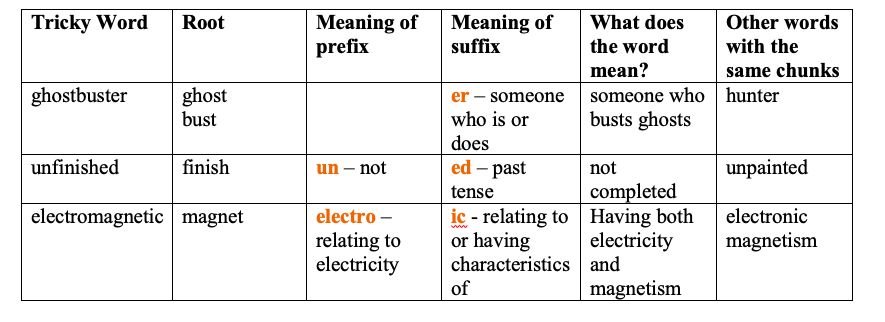USING CHUNKING TO SOLVE TRICKY WORDS
Many of the words that challenge our students, especially in nonfiction, have multiple syllables. But they are often easier to decode than they look. Just because they’re “long” doesn’t mean they’re difficult. In fact, many of them are pretty easy to figure out if we break them down into meaningful chunks. Root (or base) words, prefixes and suffixes are all chunks of meaning.
TEACHING VOCABULARY CHUNKING
The HIP downloadable passage “Real Life Ghostbusters” from The Warning Teacher’s Guide is not only entertaining reading, it’s full of great multisyllabic words like supernatural, electromagnetic, and ultrasonic. Even the word ghostbuster is a compound word made up of the words ghost and buster. We know that the suffix “er” often means “someone who does” or “someone who is.” Therefore a ghostbuster is someone who “busts” or gets rid of, ghosts.
Download the HIP Learning Activity Package on “Real Life Ghostbusters” for discussion points before, during and after reading, as well as practice with solving multisyllabic words using morphological chunks.
OUTSIDE THE WORD, INSIDE THE WORD
Neither inferring from the surrounding text nor breaking down a word into meaningful chunks is a failsafe decoding tool on its own. However, in combination they are probably the most effective word-solving strategy we have, especially for struggling readers. The first thing struggling readers need to do is recognize when they encounter a word they don’t know; the next thing is to apply strategies for solving that word. One effective process for solving unfamiliar words is to read outside the word to see if there are context clues nearby, then read inside the word to see if there are root or affixes that help confirm the meaning.”
Lori Jamison Rog, Struggling Readers: Why Worksheets Don’t Work and Band-aids Don’t Stick.
Read more about Signal Words that indicate clues to tricky words.
See also Vocabulary and Word Study.
Lists of the most common prefixes and suffixes from the Cambridge Dictionary.
Read about Patricia Cunningham’s “Nifty Thrifty Fifty” – 50 words for teaching the most common prefixes and suffixes.


